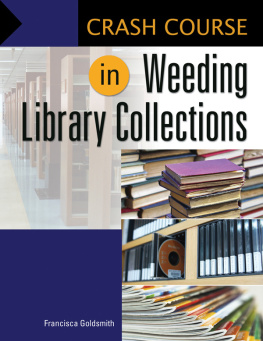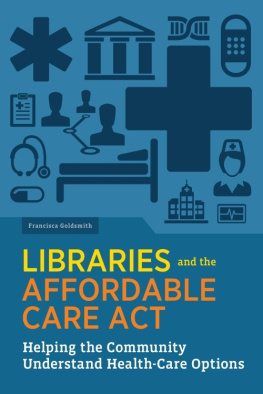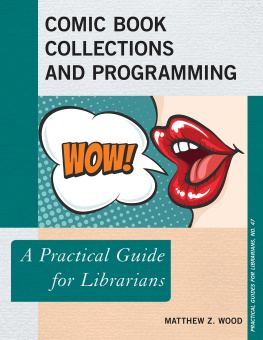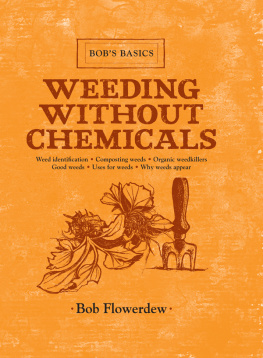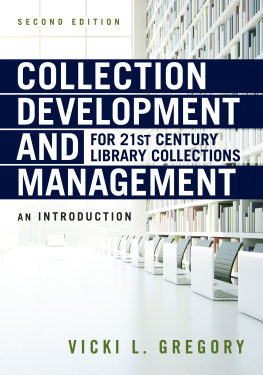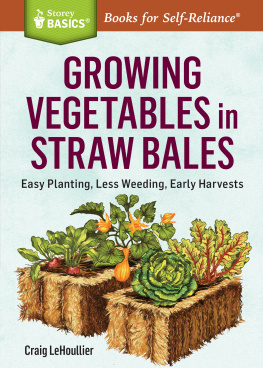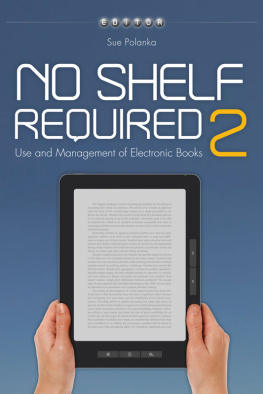Crash Course in Weeding Library Collections
Recent Titles in
Libraries Unlimited Crash Course Series
Crash Course in Genealogy
David R. Dowell
Crash Course in Family Literacy Programs
Rosemary Chance and Laura Sheneman
Crash Course in Services for Seniors
Ann Roberts and Stephanie G. Bauman
Crash Course in Strategic Planning
Stephen A. Matthews and Kimberly D. Matthews
Crash Course in Gaming
Suellen S. Adams
Crash Course in Dealing with Difficult Library Customers
Shelley E. Mosley, Dennis C. Tucker, and Sandra Van Winkle
Crash Course in Childrens Services, Second Edition
Penny Peck
Crash Course in Collection Development, Second Edition
Wayne Disher
Crash Course in Marketing for Libraries, Second Edition
Susan W. Alman and Sara Gillespie Swanson
Crash Course in Readers Advisory
Cynthia Orr
Crash Course in Storytime Fundamentals, Second Edition
Penny Peck
Crash Course in Basic Cataloging with RDA
Heather Lea Moulaison and Raegan Wiechert
Crash Course in Weeding Library Collections
Francisca Goldsmith
Crash Course

Copyright 2016 by Francisca Goldsmith
All rights reserved. No part of this publication may be reproduced, stored in a retrieval system, or transmitted, in any form or by any means, electronic, mechanical, photocopying, recording, or otherwise, except for the inclusion of brief quotations in a review, without prior permission in writing from the publisher.
Library of Congress Cataloging-in-Publication Data
Names: Goldsmith, Francisca, author.
Title: Crash course in weeding library collections / Francisca Goldsmith.
Description: Santa Barbara, CA : Libraries Unlimited, an imprint of
ABC-CLIO, LLC, [2016] | Series: Crash course | Includes bibliographical
references and index.
Identifiers: LCCN 2015025225 | ISBN 9781440836886 (paperback) |
ISBN 9781440836893 (ebook)
Subjects: LCSH: Discarding of books, periodicals, etc.Handbooks, manuals, etc. |
BISAC: LANGUAGE ARTS & DISCIPLINES / Library & Information Science /
General. | LANGUAGE ARTS & DISCIPLINES / Study & Teaching.
Classification: LCC Z703.6 .G65 2016 | DDC 025.2/16dc23
LC record available at http://lccn.loc.gov/2015025225
ISBN: 978-1-4408-3688-6
EISBN: 978-1-4408-3689-3
201918171612345
This book is also available on the World Wide Web as an eBook.
Visit www.abc-clio.com for details.
Libraries Unlimited
An Imprint of ABC-CLIO, LLC
ABC-CLIO, LLC
130 Cremona Drive, P.O. Box 1911
Santa Barbara, California 93116-1911
This book is printed on acid-free paper 
Manufactured in the United States of America
Contents
Weeding the librarys collection has a lot in common with weeding a garden. The well-weeded garden has a lot of sensory appeal and creates a sense of well-being in those who visit it. That is the aim of library weeding as well: to create and maintain an environment that welcomes, provides substance, and is accessible both physically and intellectually.
My own experience with weeding projects and practices in a variety of library types and sizes allows me to act as your interpreter and coach as you learn how to pursue weeding effectively. I have worked directly in every facet of collection maintenance related to weeding and have, for many years, provided instruction regarding weeding through the California State Librarys Infopeople Project, the Southeast Florida Library Network, and other staff development entities. Every situation is indeed different, just as every garden is different. However, the basic principles of weeding indicate basic practices that any library weeding situation would find beneficial. It is those best practices, along with their hows and whys, we will examine in depth here.
Weeding is among the most provocative of library service needs, calling out as many emotional reactions from staff and the librarys community as it does practical responses. Weeding, in common with dental hygiene, is a set of tasks that we know we should do and that to do well we must keep up our efforts on a frequent, regular, and ongoing basis. Some people love to weed and some people enjoy brushing and flossing. A lot of people do not particularly enjoy either of these necessities. In this Crash Course, we will examine how to begin and maintain a healthy weeding program, even when we would prefer to be snacking on a candy bar and going to bed without brushing.
My first suggestion is that you acknowledge your own attitudes and concerns about what weeding your library might mean. Note them somewhere and put the note away as we go forward. You can recheck your gut reactions against what we learn in each section, and, much more importantly, the experience you gain in actively weeding, and modify them as warranted. No one should love weeding for its own sake any more than we need fear it in the abstract. Like brushing your teeth, how you feel about doing it needs to take a backseat to the doing itself. However, be honest: if weeding makes you nervous, tentative, or annoyed, own that for yourself and do not drag those feelings all over your professional work.
This Crash Course is divided into eight chapters, which are arranged from the most practicalidentifying weeds and learning how to use tools to address their removalto matters of policy and library governance related to understanding weedings role in collection maintenance at its highest conceptual level. Depending on your library, your role in the librarys weeding work, and other circumstances, you may want to consult these chapters in an order other than that presented here. However, the order of these chapters is purposeful and it is suggested that, for maximum utility, you work through the information and create the local documentation in the order that permits you to develop awareness of the practical, and then the abstract.
addresses what in gardening terms would include soil analysis, landscape design, and seasonal awareness of the locale. What are weeds when we are located in that landscape and have the gardeners view of both plant identity and plant health?
introduces the tools and processes available to weeding work, as well as how to use them to weed both effectively and efficiently.
In , we look more closely at the roles staff have in the various processes involved with weeding. We look at how weeding decisions are made within the context of this library at this time, how to manage the weeds themselves once they have been removed from the healthy plant bed, and how to develop support for our weeding work.
provides a highly detailed examination of what being out of date means when considered by both topic and intended audience.
In , we take up the work of consultation that weeding requires. The care of the librarys collection garden requires ongoing awareness of atmospheric (stakeholder) conditions, just as weather affects gardening and garden care. With this information, we can document how our weeding work is to progress and the importance of documentation to responsive and realistic weeding efforts.
With , we explore the connections between weeding and all other library services, as well as policy documentation directed at issues in which weeding awareness is required, including statements about the librarys reception of donations.

